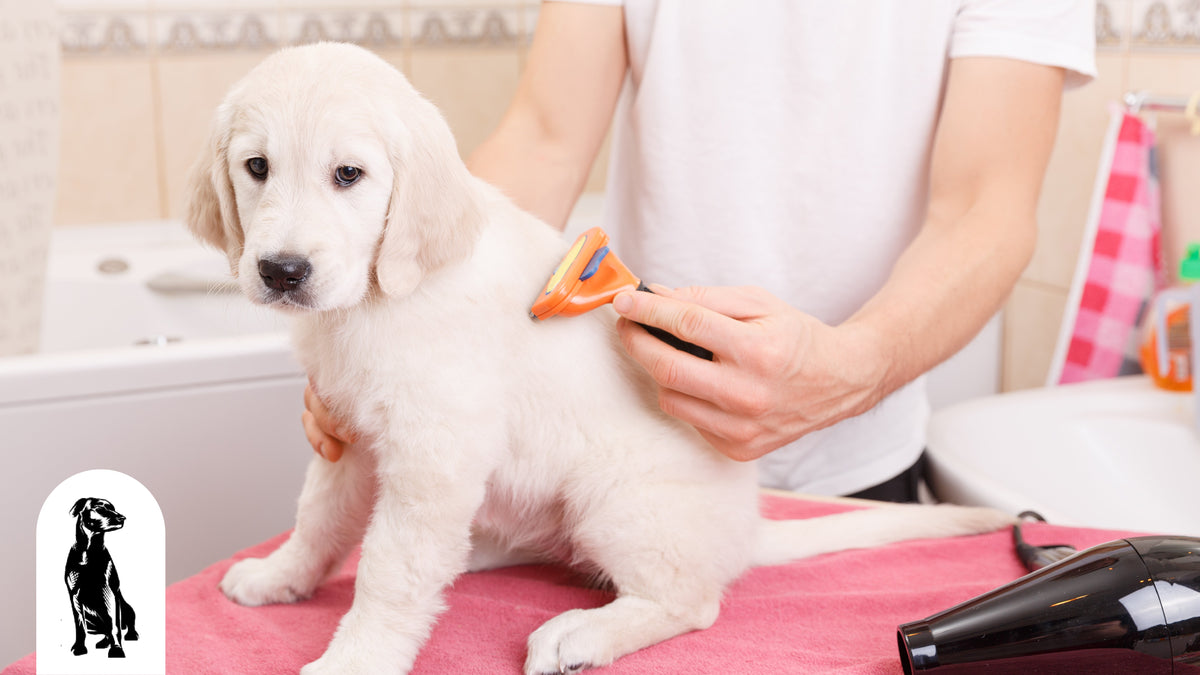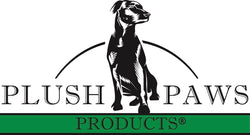
There are lots of reasons that it would be easier to groom my dog at home. The high costs of grooming, the absolute adventure of the trip to the store, and the difficulty that comes with communicating a vision to a groomer can all be prohibitive. Learning how to groom your dog helps avoid all of those things.
Dog Grooming for Beginners
When you go get your haircut, you don’t want the stylist to rush. If she is anxious or stressed, it might make you feel the same way. If she goes too fast, she can make mistakes--and after all, your stylist is the one holding sharp objects around your head.
Your dog is in the same situation. Your dog has to trust that your intentions are good. Trying to outsmart or out-anxious a dog won’t work. If they know that you are rushing or nervous about what you are doing, they will pick up this energy, and you can’t blame them for squirming and feeling anxious.
Give yourself plenty of time. This is the single biggest mistake that people make when starting to groom their dogs at home. Especially the first couple of times that you do it, it will take a while. The groomers that you take your dog too are professionals, and while they can do it in an hour, it seems unrealistic to think that you’ll be able to do the same.
Train your dog to resist distraction. Be patient with them, and expect the process to take a long time.
Baths vs. Brushing
Using a brush before you bathe is essential. In fact, regular brushing will go a long way toward keeping your dog’s fur clean. Dirt and debris can get trapped in fur easily. If you bathe your dog without regular brushing, all that grime will end up in the bath water and spread deeper and further into their coat.
Using a metal pin brush will help pull the hair easily without tugging, and will scrape out a lot of the dirt and grass caught in the fur. If you have a shorter haired dog, you may want to simply opt for a shedding blade. It’s important to get your dog comfortable with brushing for their own health. You don’t want brushing to be an intense experience for you or an anxious experience for your dog. Groomers will get your dogs to stand when they brush, that way they can get a more complete brush. Focus on doing this with your dog as well.
If you’re willing to put in the labor to bathe your dog, that savings can be invested back into your dog’s health by purchasing a more expensive shampoo. Be prepared to opt for the more expensive versions of shampoo, because the cheaper ones can cause damage to your dog’s fur because they often contain harsh chemicals. Coats aren’t just about cleaning. Investing in the right supplements for your dog can have a big impact on the health of their coat and body.
My Dog is Acting Strange After Grooming
Gathering the courage to groom my dog at home took awhile. But it can be even more baffling and frustrating when my dog begins acting strange! It is possible that your dog was injured in the process. They may be experiencing discomfort from shampoo in the eyes or mouth. If the problem persists, you may need to take them to a vet. There are also things that your dog might be allergic to.
What Should Grooming Include?
Prep for dog grooming by gathering all the tools and supplies that you’ll need:
- Dog bath tub
- Shampoo that is specially made for dogs
- Towels
- Ear solution
- Clippers for dog hair
- A blow dryer
- Dog toenail clippers
- “Styptic Powder” (in case you clip too far up on the dog’s toenails)
Begin with a calm tone and a lot of conversations with your dog. When you begin, you need to brush and detangle the coat, that way the bath doesn’t simply spread around the dirt in their hair. If they have a lot of matted hair, use a matted rake (see the section on this below).
Before the bath, you’ll need to clip any excess hair. If you’ve got a dog with longer hair, you’ll need to trim more around the belly and feet than other dogs. Usually dog-grooming scissors work well, but you can also use a spare pair of clippers. When grooming, it’s essential that you brush twice — once before you clip and once after you clip. Brushing before you clip makes sure you can see how long the hair is by getting out tangles and matting, and brushing after you clip moves away excess hair before washing. For the second brush, you can use a finer-toothed comb to really work out the hair and massage the skin of your dog.
Now we’re ready for bathing. Bathe wherever is most comfortable for you and your dog, but remember that it will be messy wherever you do it. There are a couple of keys here. Use cotton balls to help absorb the water that is in your dogs ears, as the water can remain in their ears and cause infection. Pick an appropriate shampoo for your dog and lather well. You really don’t want to use human shampoo, which can damage your dog. Keep the suds away from your dog’s eyes. It’s best to use your hands to lather and rinse your dog, as you can also feel their body for hair that is still tangled or any wounds that you weren’t aware of. Rinse thoroughly and then dry.
To clean the ears of your dog, use cotton balls and gently swab around inside. Don’t use a Q-tip or reach too far into the ear of your dog. You can bump the eardrum and cause hearing damage. Cleaning your dog’s ears is essential to preventing infection and the rupture of blood vessels. If your dog’s ears irritate them, they can shake their head and scratch their ears, which can further damage them. Use this as a time to check on the health of your dog’s ears.
Next, you’ll want to trim the toenails of your dog. This can be scary because you’ll want to avoid hurting them. Toenails that get too long can ingrow or cause discomfort when your dog trots around. Be gentle and reassuring, and be patient with your dog. The toe nail clippers can be really scary. You may need help from someone else to clip the toenails. When clipping, clip the nail at the end and not the quick (the upper pink part of the nail). If you nick the quick, it can cause bleeding and pain. Put styptic powder on the wound and hold pressure until the bleeding abates. Want to avoid clipping altogether? Walk your dog on cement, which can naturally wear the nails down without clipping.
Finally, brush your dog’s teeth. Invest in dog toothpaste and a dog toothbrush. Never use human products on your dog’s teeth. Brushing your dog’s teeth is an intimate process, so be prepared for your dog to unintentionally bite or snap in your direction.
How to Groom a Dog Face
Your dog’s face is an especially sensitive area, particularly the eyes and nose. When you’re grooming the eyes of your dog, simply try to pull debris away from the eye area. Look for a solution to remove tear stains if their coat is streaked. Be careful around the eyes, and don’t try to trim hair that is too close to the eyes.
How to Groom a Dog with Matted Hair
Your best friend here is going to be a matted rake. This tool has some sharp points that will help cut through excess hair, so use it with caution. Be gentle with matted hair, and remember how it feels when someone is pulling on the tangles in your own hair!
Remember that after grooming dogs with matted hair, they may be shedding for a while afterwards. You can use a cargo liner to prevent loose hair or debris from getting over your car after grooming! After all, grooming at home prevents a lot of that extra dirt from landing in your car on the trips too and from the groomers. It’s best to protect your car extra well when home-grooming to derive all the benefits possible.
Final Thoughts
As you begin your grooming journey with your pup, remember: don’t do anything you aren’t confident in doing. If you are nervous about trimming your dog yourself, it is best to just leave it to the professionals.
Good luck with your grooming; even if it is a little uneven your first go around, your dog will still be the cutest in the world.


